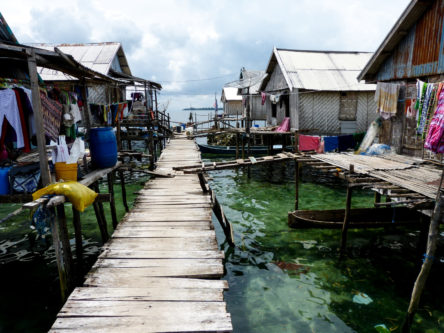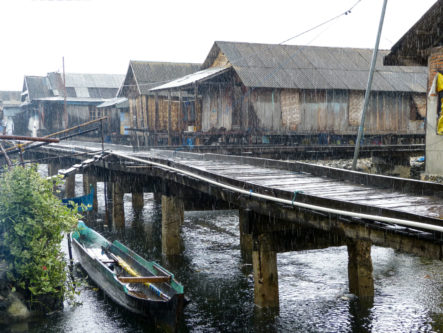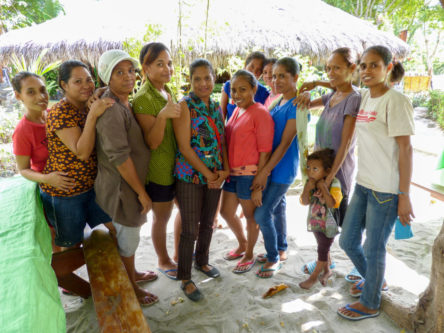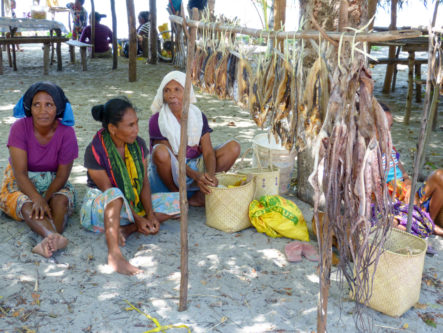Imagine that your organisation works with coastal communities in the tropics to rebuild fisheries, and has set the ambitious target of reaching three million people by 2020. Now imagine that you have been tasked with helping identify those communities, and the time has come for your first exploratory trip into new territories. How are you going to feel as you board the plane?
Blue Ventures’ Population-Health-Environment (PHE) approach, which integrates health education and services with community-based conservation and fisheries management initiatives, is proving to be really popular in Madagascar. My task for this trip was to see if this approach would be of value and interest to communities in Indonesia or Timor-Leste. Having never visited either country before, I had relatively little idea of what to expect as I boarded the plane. Needless to say, I felt pretty anxious!
My first stop was Bali. Thanks to the help of colleagues from Health in Harmony (who have their own PHE programme in Borneo), I had a productive two days of meetings with representatives from the health, fisheries and conservation sectors, as well as valuable time with the Health in Harmony team. During this time the difference in health care systems between Indonesia and Madagascar became increasingly clear.
My next destination was the Wakatobi archipelago. With a population of 100,000 concentrated mainly on its four largest islands, this is the third largest marine national park in Indonesia and where we are soon to partner with local community group Forkani on fisheries management. Arriving at what immediately struck me as a remote and under-served part of the immense Indonesian archipelago, I set about trying to meet with as many people as possible. Thanks to the charismatic and dynamic Nusi, my contact at Forkani, I was able to engage in discussions with a cross-section of community members about various aspects of community life.
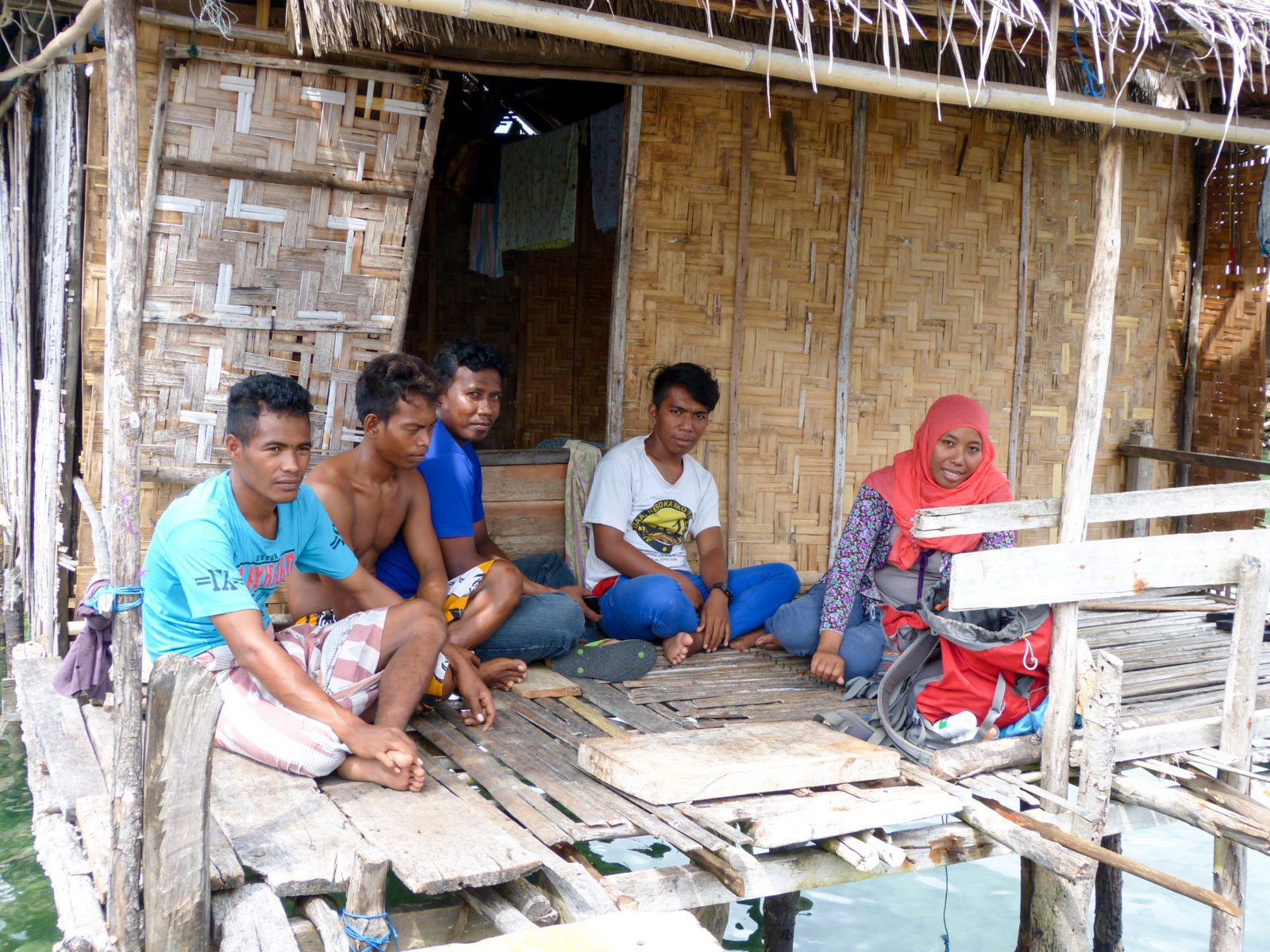
I had an informal discussion with a group of young fishermen. Nusi from Forkani is in the red headscarf on the right.
I was painfully aware of the depth of my ignorance about these communities, their culture and their environment as I immersed myself in this new world. Whilst we have learned things in Madagascar that could be of value here, we are going to be relying heavily on local partners to adapt this learning to their context. This is of course an inevitable consequence of transitioning from working in one place to supporting widespread adoption of our approach, and it’s comforting to know that this understanding is built into our plan for reaching more people.
As a doctor it’s humbling to be reminded that access to health care is not everyone’s first priority. Almost every time I asked community members what they most needed, the answer was the same: food on my table, money in my pocket. Better health care, whilst still important, usually came third on their list. The power of Blue Ventures’ approach, with our focus on the livelihoods of coastal communities, really hit home. Nonetheless, it was clear that improving access to health care was likely to be another meaningful way of engaging communities.

Another informal discussion with some women from Tampara on the island of Kaledupa. Nusi is on the right with the red headscarf.
During my discussions with the community members, a picture of two coexisting groups of people started to emerge. The majority group were the Indonesians living on the islands: a mixture of fishers, aqua-farmers and subsistence agriculturists. The minority group were the Bajau people, living on offshore villages built on stilts. The Bajau used to be seafarers: highly skilled fishers living in houseboats and never previously setting foot on land, they were forced to abandon their nomadic existence in the 1960s.
After spending some time with them, my impression was that the Bajau are struggling to come to terms with their new set of circumstances. They feel quite marginalised by mainstream Indonesian society and experience real challenges to accessing good health care. “Sometimes the midwives laugh at us for bringing our medical problems to the clinic” was the disturbing confession of one Bajau woman from the village of Sampela. “We have no other choice but to use and trust this service.” The issues raised by this woman’s experiences pose all kinds of challenges to improving the health of these communities. This is made all the more complex by the fact that these two groups of culturally and linguistically diverse people, living on the same small archipelago, are likely to need different approaches in order to support their engagement on issues relating to fisheries and health.
More striking than their differences, however, were the similarities between both groups of people. Access to health services in this remote part of Indonesia is limited, and becomes more difficult the further you move from large population centres. Everyone who I talked to wanted better access to health care. Interestingly, lots of people made the connection between a lack of access to family planning, family size, fishing pressure and fish abundance. Without giving a single prompt I was hearing exactly what our partner communities were telling us nearly a decade ago in Madagascar. Almost everyone articulated their concern about fish stocks being in decline. “Life is getting harder,” admitted one of the village elders from Sampela. “The community is getting bigger and there are less fish.” Twenty kilometers away, a fisherman from the small island of Darawa could almost be reading from the same script: “there are fewer fish now,” he told me. “We have to travel further to catch fish.”
These communities, with whom we will be working to rebuild fisheries, were clearly stating that they were interested in our integrated approach. But without any local health partners with whom to join forces, our Malagasy model of “health-environment partnerships” is going to need adapting, and this prompts all sorts of questions. What would a PHE programme look like here? What are the implications of trying to offer health services ourselves? At what point would we decide that it doesn’t make sense for us to proceed? I’m still grappling with these questions, but feel strongly that we should at least try to address some of the unmet health needs we have unearthed.
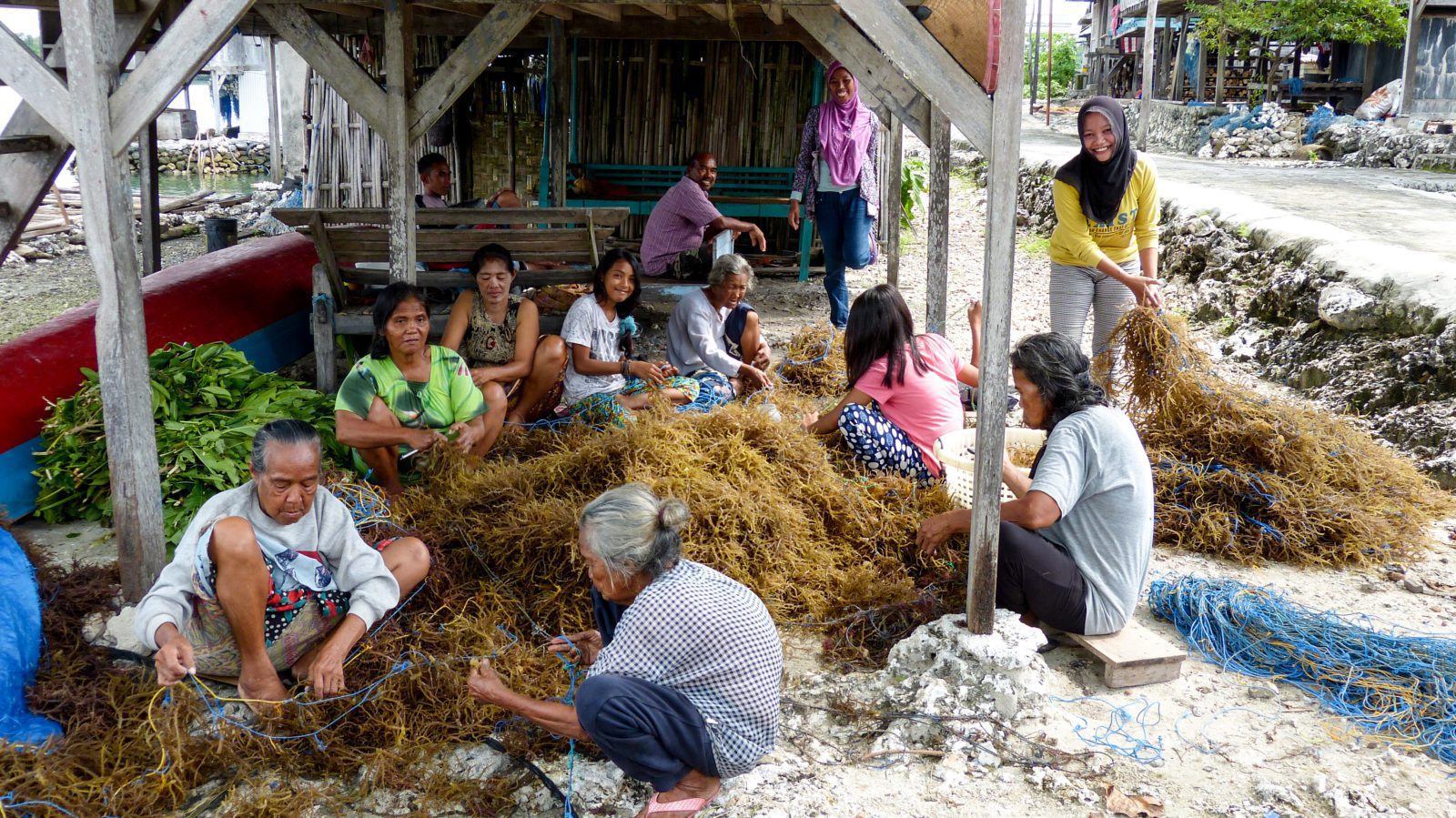
A family from the small island of Darawa are harvesting seaweed as an additional source of income
After an intense and exhausting ten days in Indonesia, I couldn’t quite believe that I was travelling to Timor-Leste to repeat this exercise! Thankfully our in-country team and partners were able to host my visit and facilitate lots of useful connections, making the whole process run very smoothly.
Meetings in the capital again revealed how different this new context would be. Timor-Leste is home to a huge number of health NGOs (as well as a multiplicity of private health care providers), several of whom seem willing to partner with us. With a government very used to collaborating with international agencies, addressing issues such as maternal health and childhood nutrition was likely to secure rapid endorsement from the Ministry of Health. As a Catholic country, however, addressing unmet family planning needs might not be met with the same enthusiasm, and was going to need a lot of thought.
I then spent a few days on the beautiful, mountainous island of Ataúro, location of Blue Ventures’ newest expedition site and home to 8,000 people, most of whom rely at least in part on fishing. Through discussions with lots of different stakeholders and community representatives, I was able to immerse myself in another new world.
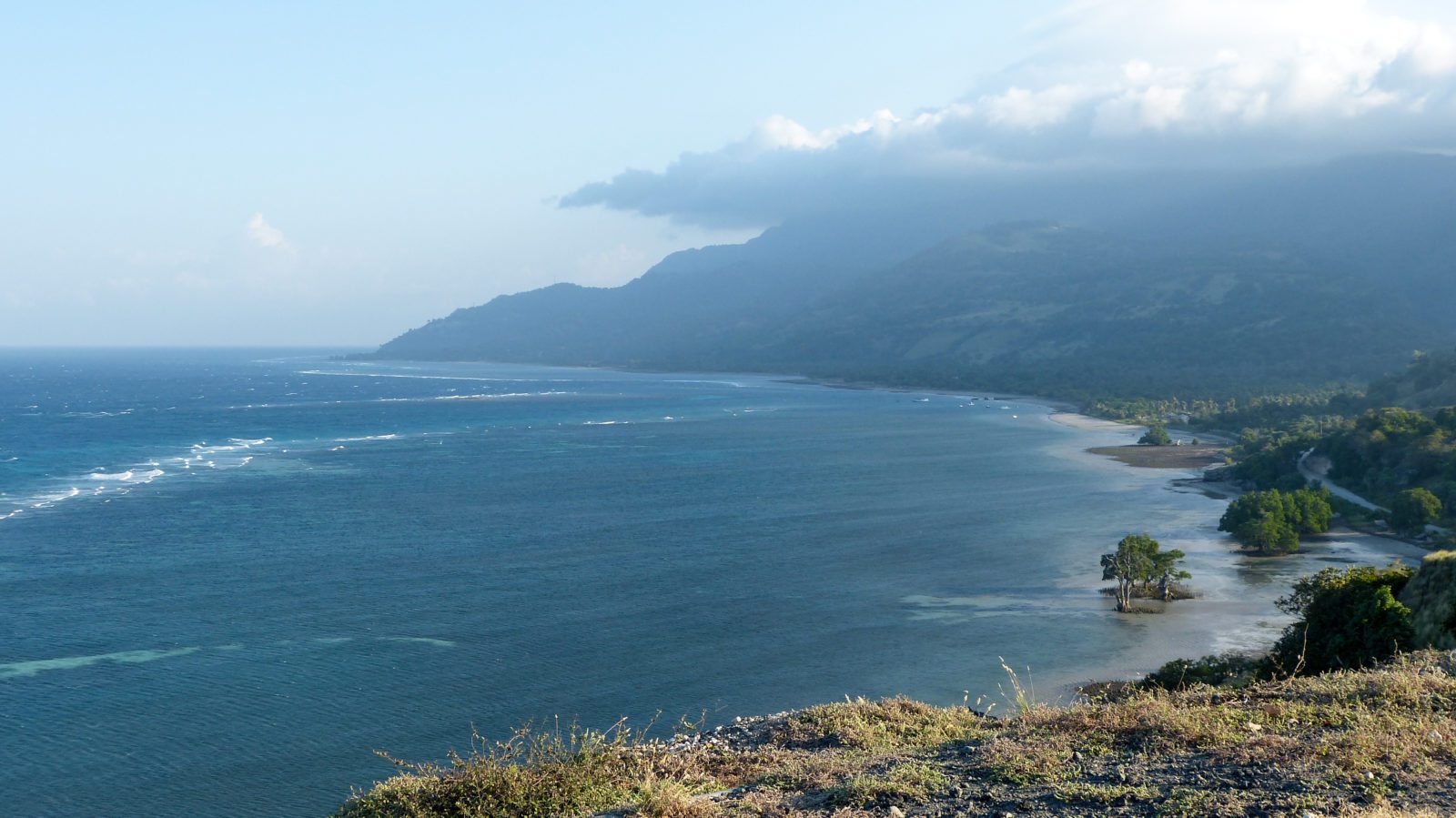
The beautiful Ataúro Island in Timor-Leste
The key messages were similar to those in Indonesia: communities are interested in support with their livelihoods first, then health; everyone wants improved access to health services; communities can clearly see the link between family size and food security. Of course what emerged was more complex and nuanced than that. However, as before it was easy to see that taking a holistic and integrated approach to the needs of these communities was not only possible, but was what they were asking for. This certainly feels like a good enough basis upon which to support the implementation of PHE.
Clichéd as it sounds, it has been a privilege to connect with communities in both of these places, and I’m grateful for their generosity and trust during our discussions. Inevitably, simply by having conversations, people start to develop expectations of what you might be able to offer. In addition, “gathering data” too often becomes yet another extractive process, and I don’t want us to be seen as one more organisation coming to collect data that they don’t share or act upon. Ideally these initial conversations should be the start of a responsible two-way dialogue, where both parties benefit and learn from each other, and I look forward to the opportunity to share what I have learned with everyone who gave me their time and their thoughts. Next comes the exciting part: using communities’ responses to start formulating ideas for how our PHE approach could serve their needs. Despite the challenges, I’ve come away feeling optimistic that we do have something to offer.
As I sit at home reflecting upon the breadth of what I have witnessed, however, I am left with an uncomfortable truth: these communities have the weakest voice of all the stakeholders in their regions. They (and the marine ecosystems that they are intimately connected with) are incredibly vulnerable to the effects of aggressive resource extraction, a lack of service provision, poorly planned coastal development, climate change, and all manner of threats. Whatever form our work takes, my hope is that it will contribute in some way to greater control for these communities over their health and the way their natural resources are managed.


